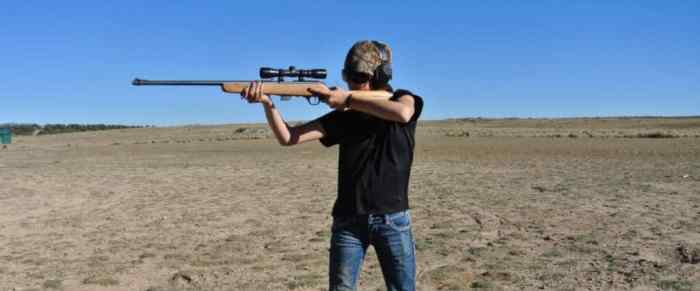In the realm of marksmanship, the four standard rifle firing positions—prone, sitting, kneeling, and standing—form the cornerstone of accurate and effective shooting. Each position offers unique advantages and disadvantages, making it crucial for shooters to master them all to adapt to diverse shooting scenarios.
This comprehensive guide delves into the proper techniques, cover utilization, and situational effectiveness of each position, empowering shooters with the knowledge and skills to excel in any shooting situation.
Four Standard Rifle Firing Positions

Rifle firing positions are essential for accurate and effective shooting. The four standard positions, prone, sitting, kneeling, and standing, offer distinct advantages and disadvantages in different shooting scenarios.
Each position requires specific techniques and considerations for cover, concealment, stability, and accuracy.
Prone Position
The prone position is the most stable and accurate of the four positions. It offers the lowest profile, making it difficult for the shooter to be detected or hit.
- Technique:Lie on your stomach, elbows bent, and forearms supporting the rifle. Use natural cover and concealment, such as grass or a rock, to minimize exposure.
- Stability:The prone position provides excellent stability due to the support of the ground.
- Accuracy:The prone position allows for precise aim and follow-through.
Sitting Position, Four standard rifle firing positions
The sitting position is more versatile than the prone position, allowing for greater mobility and situational awareness.
- Technique:Sit upright, legs slightly spread, and rifle resting on the knees. Use cover and concealment to protect the upper body.
- Advantages:The sitting position offers a good balance of stability and mobility, making it suitable for close-range shooting.
- Disadvantages:It can be less stable than the prone position, especially in uneven terrain.
Kneeling Position
The kneeling position combines the stability of the prone position with the mobility of the sitting position.
- Technique:Kneel on one knee, with the other leg bent and supporting the rifle. Use cover and concealment to protect the exposed leg and upper body.
- Versatility:The kneeling position is versatile and can be used in various shooting situations, from close-range to medium-range.
- Disadvantages:It can be less stable than the prone position and more tiring than the sitting position.
Standing Position
The standing position is the least stable of the four positions but offers the greatest mobility and situational awareness.
- Technique:Stand with feet shoulder-width apart, rifle held at shoulder height. Use cover and concealment to protect the exposed body.
- Challenges:The standing position is the most difficult to maintain stability and accuracy, especially for extended periods.
- Advantages:It allows for rapid target acquisition and movement.
General Inquiries
What is the most stable rifle firing position?
The prone position offers the highest stability and accuracy due to the shooter’s body being fully supported by the ground.
Which position is best for shooting at close range?
The sitting position provides a balance of stability and mobility, making it suitable for close-range shooting where rapid target acquisition is crucial.
How do I maintain accuracy in the standing position?
Maintaining stability in the standing position requires proper body posture, weight distribution, and breathing control to minimize body sway and ensure precise shot placement.

